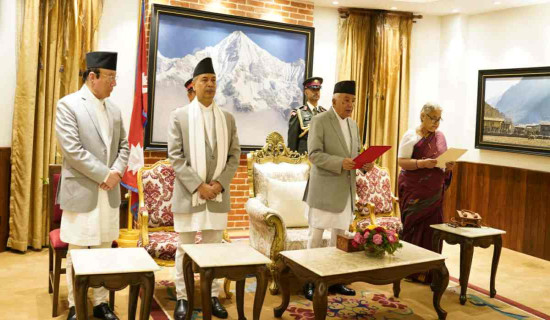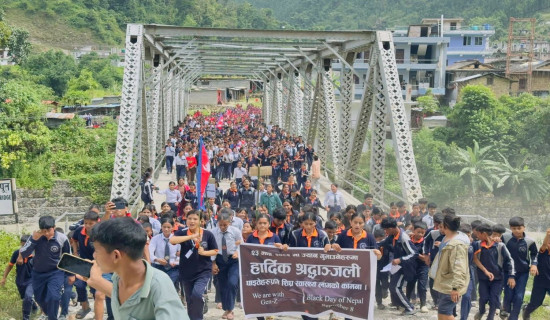- Saturday, 13 September 2025
Expedite Construction
The construction sector constitutes a vital component of national economy as it draws a huge investment from both government and the private sector. With spending on infrastructure, the sector stimulate economy in time of recession. In the Nepali context, construction industry gets involved in building big infrastructure such as highways, hydropower, real estate, irrigation, dams, public utilities and government buildings. When a big amount of capital is mobilised, hundreds of thousands of jobs are created, thereby helping the people solve their livelihood problems and lead a life of dignity. It employs skilled, unskilled and seasonal workers. It has been the largest employer in the country. Around 400,000 youths enter the labour force in Nepal annually and the construction sector absorbs significant number of them. If the sector flounders, this will have negative repercussions for job opportunities and economic growth.
However, a news report, carried by this daily on Sunday, shows that the construction sector is passing through hard times due to the decreased loan mobilisation, high interest rates, restriction on land plots, crisis in the cooperative sector and share market crash. Both the public and private construction sectors have been reeling from crisis for the past more than one year, hitting the business of construction materials such as cement, iron bars, paints, pipes and fittings, electric goods, furniture and decorative items. The trade of pipes and fittings has declined by 40-50 per cent as the people are not constructing private houses. Only medium and large industries and some housing projects are involved in construction and maintenance works.
Due to construction decline, production of cement factories has exceeded the domestic demand and the manufacturers have requested the government to bring alternative schemes to boost the infrastructure development to increase the demand for cement. A Nepal Rastra Bank (NRB) study reveals that the manufacturing sector ran on an average of 42 per cent of its capacity in the first half of the last Fiscal Year 2022/23 as the approval for the blueprint of house construction went down by 37.5 per cent during the same period. The steel industry is running below 40 per cent due to the low development spending and liquidity on the part of common people.
The iron industries are said to be on the verge of collapse as the government has imposed a 5 per cent import duty and Rs. 2.5 per kg excise duty on MS Billets, the key raw material for iron bars. The construction industry was providing direct employment to 2 to 2.5 million people, but around 1.5 million people have been laid off due to the ongoing recession. It is necessary to give impetus to the implementation of projects given that about 1,800 projects worth Rs. 400 billion are awaiting deadline extensions. The government bears a liability to clear Rs. 40 billion to the contractors while it has to pay around Rs. 10 billion to them for the under construction projects.
Over 800 projects are pending owing to the glitches related to the land acquisition, budget and design. With the government ban on the illegal crusher industries, there was a shortage of stone, sand and gravel, affecting the sector. There is a rise in the remittance inflow but it is not being spent on productive sectors. At the moment, Nepal needs to invest massively in infrastructure for the development of agriculture, industries and public utilities. This will boost capital spending and give a fillip to the construction sector.

















